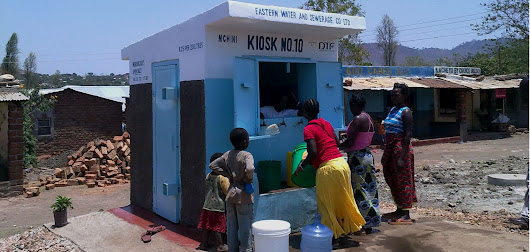What can we learn from Lukaya?
Hi and welcome back to the blog! In the last post I talked about how water quality issues have been oversimplified by some charities in the media and, with the help of Boakye-Ansah's work, how sometimes the problems may be more political than they seem.
In this post we'll be looking at Lukaya, Uganda. In particular the on-site facilities available, their advantages (which helps explain why they're used) and also some of the issues that have been found.
1. The Water
In Lukaya, the main sources of water are unprotected springs and shallow wells with hand pumps (Nayebare et al. 2020).
So shallow wells are holes which have been dug/bored or drilled into the ground. They work by allowing people to access groundwater from an aquifer. Shallow wells are only 'shallow' if they are less than ~50 feet deep.
So what are the pros/cons?
Well (pardon the pun), the advantages of wells are that they allow people to access water in remote locations and are a readily available source of water (although this does depend on rainfall).
In this case, the clear disadvantage is that the well is open. This means that during periods of rainfall, the water in the well is extremely prone to contamination whether it's fecal, microbial or from other chemicals. This is a problem.
quick note: I thought it'd be interesting to mention that, when I was younger I had this idea (because of advertisements from charities) that Africa as a whole had no water available. I now realise this is untrue and many problems are unique to locations and can't be generalised but also that water quality seems to be a bigger issue than water supply.
2. The Sanitation
Sanitation facilities mainly consist of some form of Pit Latrine, elevated, partially lined or ventilated and improved.
Pit latrines are basically a type of toilet that collects feces in a hole in the ground. The person will excrete through a hole in the floor. The waste then accumulates in the hole until it is emptied. In this case, the pits would have to be emptied manually, ideally with a shovel/bucket and rope to avoid having to enter the pit and risk injury and/or disease, but this is rarely the case. What actually happens is either another pit is dug or the faecal waste is transferred to another pit. Alternatively, in their focus groups, Nayebare
et al. (2020) found sometimes an outlet is left on one side of the pit latrine housing so that faecal waste is flushed by surface runoff when it rains.
In case you are as unfamiliar with pit latrines as I was here's a diagram:
Detailed illustration of a pit latrine (source)
So what are the pros/cons?
So some advantages are:
- cost effective
- easy to construct and maintain
- offers a better alternative to open defecation
Disadvantages include:
- Potential contamination of groundwater
- Safety concerns (we will look at this in future blog posts)
- Contamination of open bodies of water (open springs)
- Faecal Contamination of water in shallow wells
Nayebare
et al. (2020) sampled some water sources to check the water quality. Sources sampled included 30 shallow wells, 3 boreholes
or deep wells and 4 unprotected springs.
What was found?
- Highly acidic water; below pH 6 (thought to be a result of decomposed organic matter in the shallow subsurface)
- in 2 sources, nitrate concentrations were 5x the WHO guideline of 50mg/L (so 250mg/L)
- in 21 of 37 sources, very high amounts of E.coli indicated fecal microbial contamination
Thanks for checking out this blog post! Stay tuned for the next couple of posts where I'll be looking at potential solutions





Nice post Brandon! I was wondering if you have considered the management of the subsurface in relation to the contamination of groundwater, which you mentioned as one of the disadvantages of the pit latrine - I think it's a really interesting point to look at if you have the time! Look forward to reading the rest of your posts.
ReplyDelete